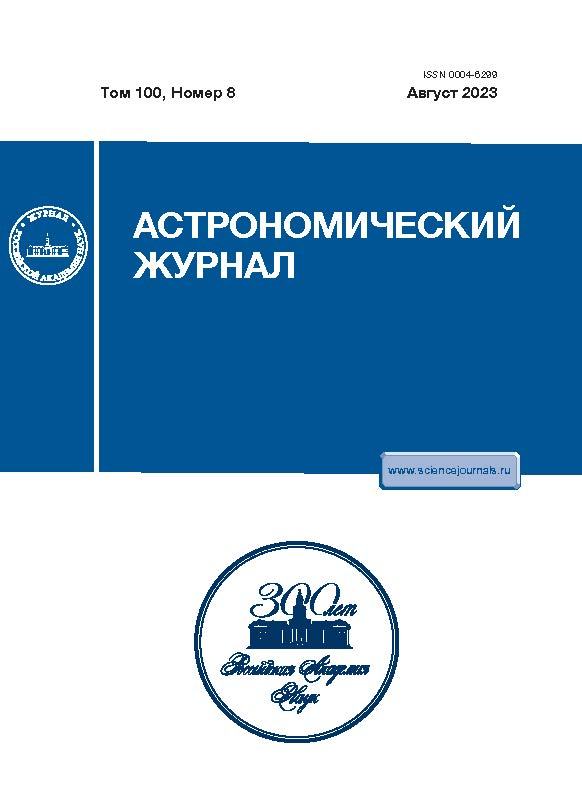Vol 100, No 8 (2023)
Articles
 649-654
649-654


ASTRONOMICAL AND COSMOCHEMICAL ASPECTS OF THE LIFE ORIGIN PROBLEM
Abstract
The fundamental properties of a known form of life are briefly considered, including the fundamental ideas about the chemical evolution of matter and the properties of living matter, which are based on biogeochemistry and molecular biology. The concepts underlying the modern understanding of the origin of life based on chemical and biological evolution are discussed. The basics of astrobiology and the intriguing problem of the existence of extraterrestrial intelligence and the search for life in the Universe are briefly touched upon.
 655-683
655-683


 684-692
684-692


THIN AND THICK DISKS AROUND BLACK HOLES AND WORMHOLES
Abstract
The paper investigates the distribution of matter in thick disks around black holes and wormholes numerically and analytically. Metrics are considered Kerr and Lamy. Accurate analytical solutions are written out. The influence of a toroidal magnetic field on the structure of a thick disk is taken into account. Images of a thin disk are constructed depending on the values of the metric parameters.
 693-707
693-707


MODERN ESTIMATES OF THE MASS OF THE MILKY WAY
Abstract
An overview of various methods used to estimate the mass of the Galaxy is given. The results obtained on the basis of the analysis of the galactic rotation curve, on the kinematics of dwarf satellite galaxies of the Milky Way, on globular clusters, on the streams of dwarf galaxies, on distant halo stars, on escape velocities, on the dynamics of the Local group of galaxies, as well as results of N-body modeling are included. Estimates of the mass of the Galaxy \(M\) of the form (i) \(M( < r)\), i.e. the mass enclosed inside a sphere with a radius of \(r\), (ii) \({{M}_{{200}}}\), where r 0 kpc, and (iii) virial estimates, \({{M}_{{{\text{vir}}}}}\). Such estimates were selected by us based on literary data,a significant part of which was obtained in the Gaia era. According to 20 individual estimates, the average value was found \({{\bar {M}}_{{200}}} = 0.88 \times {{10}^{{12}}} {{M}_{ \odot }}\) with a variance of \(0.24 \times {{10}^{{12}}} {{M}_{ \odot }}\) and a weighted average error of \(0.06 \times {{10}^{{12}}} {{M}_{ \odot }}\). According to 28 individual estimates we obtained \({{\bar {M}}_{{{\text{vir}}}}} = 1.05 \times {{10}^{{12}}} {{M}_{ \odot }}\) with variance \(0.44 \times {{10}^{{12}}} {{M}_{ \odot }}\) and a weighted average error of \(0.09 \times {{10}^{{12}}} {{M}_{ \odot }}\).
 708-720
708-720


NEUTRON STARS IN A UNIFORM DENSITY APPROXIMATION
Abstract
Models of neutron stars are considered in the case of a uniform density distribution. A universal algebraic equation is obtained that is valid for any equation of state. This equation allows us to find the approximate mass of a star of a given density without resorting to the integration of differential equations. Solutions for various equations of state, including more realistic ones, are presented in the paper and differ from the exact solutions obtained by numerical integration of differential equations by no more than 20%.
 721-734
721-734












